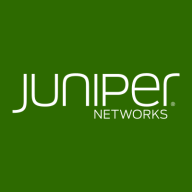

Juniper QFabric and Cisco Nexus are competing products in data center networking. Cisco Nexus generally emerges as a more feature-rich solution due to its advanced network features and robust security options, although it is priced higher. Juniper QFabric, however, is often recognized for its cost-effective pricing and excellent support structure.
Features: QFabric is known for its simplicity, efficient scalability, and easy network architecture, which supports data traffic without complex configurations. Cisco Nexus offers advanced flexibility, high security, and integration capabilities, making it ideal for comprehensive data environments.
Room for Improvement: QFabric could enhance its advanced security features and integration capabilities to match its competitors. Network flexibility and automation can also be areas for growth. Cisco Nexus may improve in simplifying its deployment and configuration steps, offer more accessible support resources, and reducing complexity in integration processes.
Ease of Deployment and Customer Service: Cisco Nexus offers comprehensive support materials for seamless implementation, though the deployment process involves significant initial configuration. It is balanced by extensive customer service. Juniper QFabric provides easier deployment with straightforward configuration, supported by reliable customer service.
Pricing and ROI: Juniper QFabric typically requires lower initial investment, offering favorable ROI from efficient resource usage. Cisco Nexus demands a higher upfront cost but delivers strong long-term ROI due to its extended functionality and adaptability, ideal for demanding network environments.


We monitor all LAN Switching reviews to prevent fraudulent reviews and keep review quality high. We do not post reviews by company employees or direct competitors. We validate each review for authenticity via cross-reference with LinkedIn, and personal follow-up with the reviewer when necessary.